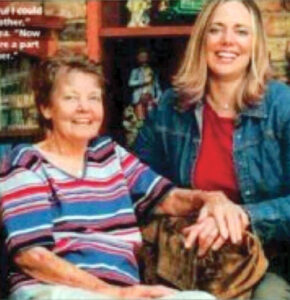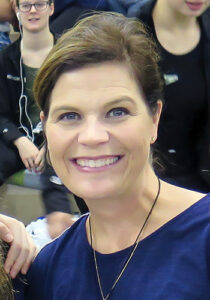Organ donors
5/1/2024For many people with organ failure, a transplant is their one hope for a return to good health. In the U.S., more than 100,000 people are waiting for an organ donation — and, for many, the wait can be five or more years. For 17 people each day, time runs out before a match can be found (organdonor.gov). Those fortunate enough to receive a transplant are given not only a gift of health, but of hope — and a future to enjoy.
 Gene Lesch
Gene Lesch
The beat goes on
Gene Lesch was well known in the Johnston community in the 1980s. He served on the school board and was president when the town passed the bond to tear down the original middle school and build the new middle school (now Wallace Elementary). It was then he went on a ski trip to Colorado over Christmas and New Year in 1986.
“I couldn’t breathe at the high altitude, and we came back after three days,” Lesch says. “I went to the doctor and was diagnosed with a bad heart — cardiomyopathy. My heart function at that time was in the 17% range.
“They made it very clear that a heart transplant is intended to get people back to normal life. I think that’s exactly what it’s done,” Lesch says. “I went out the following year and skied the same slopes that I had trouble with a year earlier.”
After returning to normal life, Lesch says you kind of forget about the transplant other than taking medicine. He goes back to the university about every other year for a full heart check. And life is good.
Source: Johnston Living, July 2023; by Ashley Rullestad
 Renea Steele
Renea Steele
Living donation
Renea Steele has lived in Norwalk for the past 24 years. About four years after she moved there, she donated her right liver lobe to her mother.
“I love making people aware of organ donation,” she says. “We were only the 24th living donor liver surgery at Mayo Clinic then.”
Renea encourages people to donate their organs to their loved ones in need.
“Don’t take your organs to heaven; heaven knows we need them here,” she says.
When she donated part of her liver, Renea was married and had two small children.
“It was tough leaving them, but I was on a mission to save my mom,” she says. “Not knowing if my mom would make it to the end of my testing was the scariest, and when I left my kids to go up for surgery, I was praying and crying the whole way hoping I would see them again.”
Source: Norwalk Living, April 2024; by Chantel Boyd
 Patty Wagner
Patty Wagner
Overcoming the odds
When Patty Wagner of Waukee was born in 1962, she wasn’t expected to live long enough to attend kindergarten. She was born with cystic fibrosis, a genetic disease that affects lungs, digestion and other body organs. Two of her sisters had already died in infancy from the disease.
She was placed on the lung transplant list and was told it could take up to three years to get a set of lungs, especially since she had a rare blood type. Patty felt she wasn’t sick enough, but her doctor disagreed.
“They said that I WAS sick enough,” she recalls.
Six months after being placed on the transplant list, she received a call late in the evening. She was told a set of lungs was available, so she headed to the University of Minnesota for surgery.
Each July, she celebrates her “transplant-versary.”
Patty thinks about her donor frequently and would like to tell her donor family this:
“Thank you so much. Thank you for being a healthy person and giving me the opportunity to save my life. The lungs are perfect,” she says. “I’ll never forget.”
Source: Waukee Living, April 2024; by Jackie Wilson
 Trudy Hancock
Trudy Hancock
Gifts to 51 people
Neil and Trudy Hancock, along with their twin boys, enjoyed a full family life until the morning Trudy suffered a cardiac event and was rushed to the hospital. After five days in the intensive care unit, doctors told the family Trudy wasn’t expected to recover.
The Iowa Donor Network contacted Neil in the ICU, where they discussed donating Trudy’s organs. Trudy, who was 44, was an ideal candidate for organ donation.
Neil and his sons discussed donating her organs.
“We all agreed it was something she’d want to do. We might as well help people. We made the decision,” Neil says.
Trudy died in July 2020, and her two kidneys, corneas and liver were used for transplants. She also donated bone and tissue. A year later, Neil learned of the full impact of her donations.
“There were 50 more people assisted: 33 grafts from bone and tissue and 17 skin grafts. They said it went as far as Tennessee and South Korea,” Neil says.
Source: Jordan Creek Living, April 2024; by Jackie Wilson






















